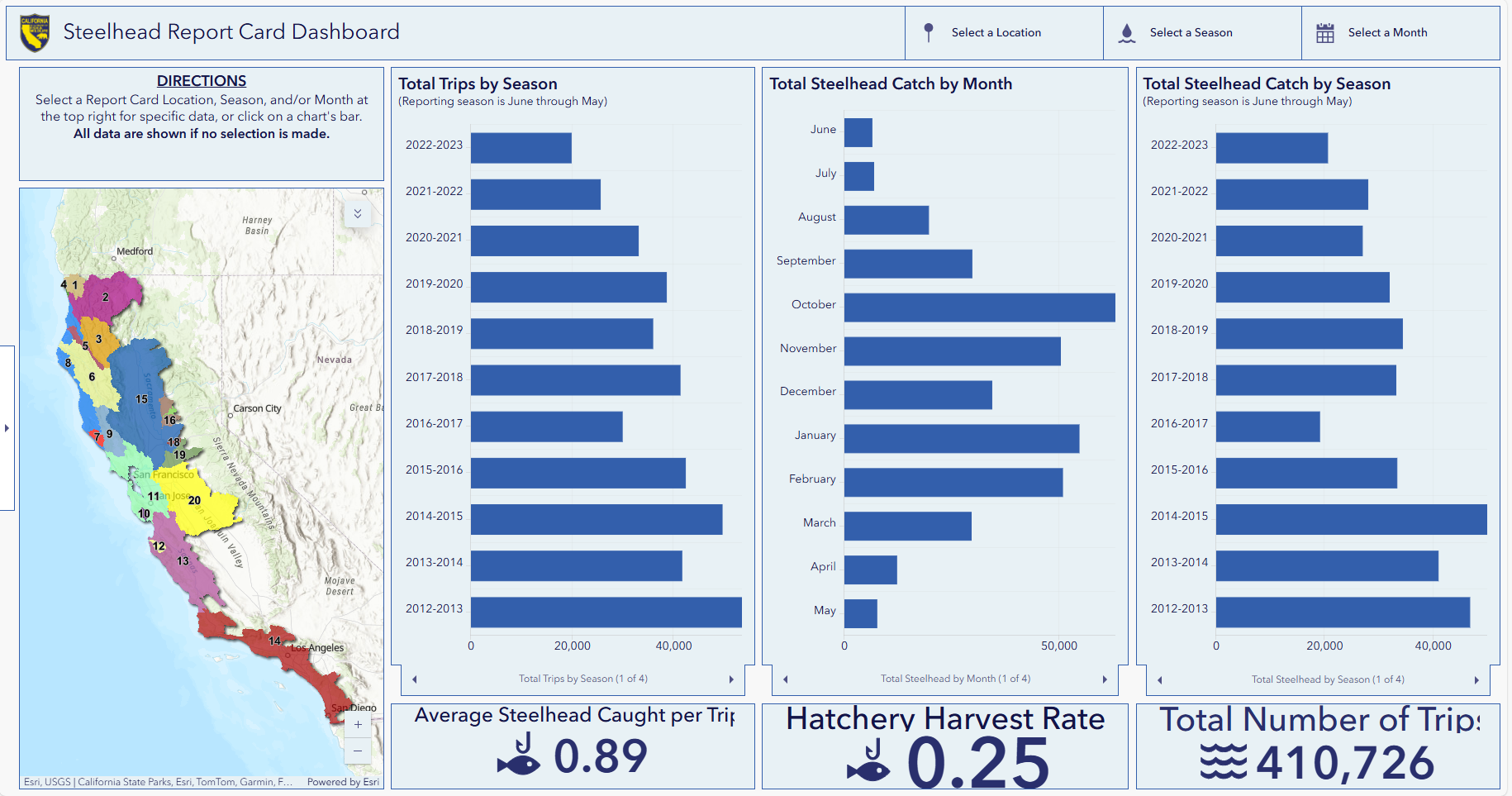California Department of Fish and Wildlife Steelhead Report Card Dashboard

The California Department of Fish and Wildlife (CDFW) tracks steelhead angler effort and success through a reporting program. This reporting program consists of a mandatory report card that all steelhead anglers need to have in their possession while fishing. Anglers record each day that they fish, where they fish, how many fish they catch, and whether those fish are from a hatchery (determined by the lack of an adipose fin, which is removed by hatchery staff before the fish is released), or were spawned in the wild (determined by the presence of an adipose fin).
Each year, anglers are required to send these report cards back to CDFW, either physically or by entering the information online.
After many years of collecting data, CDFW recently released a compilation of raw summary data for the period of 2012-2023 (linked here). The data set can be sorted by area (the Trinity River is one of 20 river systems or regions), season, or month, and shows the numbers of fishing trips, the number of hatchery steelhead caught, and the number of wild steelhead caught.
The Klamath River and tributaries (except the Trinity River) stands out as an exceptional fishery. The Trinity River is not too far behind it among the 20 steelhead fisheries in the state.
It’s important to understand that while the raw data is informative, it is only a starting point toward understanding the fisheries. For example, in many systems, including the Trinity, hatchery production has changed substantially over the time period that the dashboard shows. Some hatcheries have reduced steelhead production by as much as 40%, which has an obvious bearing on the average number of steelhead caught per trip. Conversely, this data set covers two of the most severe droughts that Northern California has ever experienced. Droughts can leave the smaller tributary streams, which are usually off-limits to fishing because steelhead prefer to spawn in smaller streams, too dry for fish to migrate into. So, they remain in the mainstem river where people can catch them more readily than in normal or wetter years when they would have migrated into their spawning streams earlier. Tribal harvest methods, too, have changed in this time period and are much more selective for hatchery steelhead (identified by their lack of an adipose fin) over wild steelhead.
Still, this dashboard can be very useful for planning where and when to go on a steelhead fishing trip. And steelhead anglers should be happy to see the data that they carefully record and report is going to good use!
